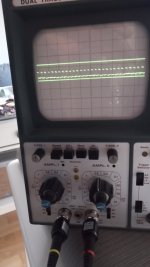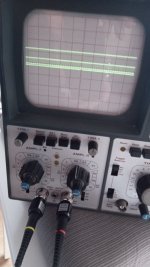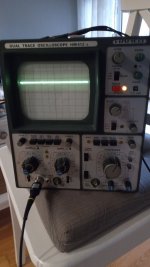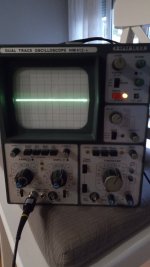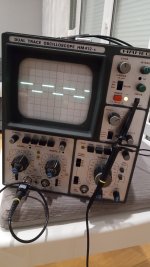Yeah, I've been practicing and getting better for a while so I think I can do it - it's still daunting though! Thanks for the link though, I might buy some of them as practice makes perfect!
I've got one of Abraxalito's Kubelik DAC kits to put together too.
You might want to look into getting a hoof tip for your soldering iron.I have to say I'm a little daunted at the prospect of soldering the Xilinx but unless I try...
I measured voltages at the USB-i2s Amanero output without USB connected:
DATA to GND 3.3V
BCLK to GND 0V
LRCK to GND 0V
Are OK?
DATA to GND 3.3V
BCLK to GND 0V
LRCK to GND 0V
Are OK?
Not okay. Have to use a scope to see the waveforms. Play some music over usb and take screenshots of the scope. Put the first probe on BCLK and second probe first on DATA, then again with the second probe on LRCK (assuming you have a 2-channel scope). That should work for both PCM and DSD. For DSD the LRCK signal will look more like a data signal instead of looking like a clock (LRCK is a clock for PCM, but it is data for DSD).
Hard to read scope pics. Maybe turn up sweep speed to get fewer BLCK repetitions. Also see if the scope has a 'hold off' function to delay sweeps and help stabilize the display. When probing LRCK in PCM mode it may be easier to get a stable scope display with the scope set to trigger from the LRCK channel.
Also, maybe adjusting the vertical position of the two traces will help make it more clear which lines are for which channel. Try to put channel on the top half of the screen and channel two on the bottom half.
Basically, the waveforms for PCM should look like those described in the attached application note. You need to adjust the scope so we can verify they look like they should.
Also, maybe adjusting the vertical position of the two traces will help make it more clear which lines are for which channel. Try to put channel on the top half of the screen and channel two on the bottom half.
Basically, the waveforms for PCM should look like those described in the attached application note. You need to adjust the scope so we can verify they look like they should.
Attachments
If PCM is playing, then something is wrong. Could be the scope is not setup properly to display the signals. Modern digital scopes have a button to push to help configure the scope settings automatically. Looks you will have do it the old fashioned way. May I ask how much you know about setting up a scope to capture waveforms? Not sure if there is really no signal or if the scope isn't set right. If need be, we can go though scope setup if I kinda have a better idea of where to start. In that regard it would help to have a good, clear, high res, very in-focus pic of all the scope controls and their labeling. Or, maybe this is scope: https://cdn.rohde-schwarz.com/hameg-archive/HAMEG_MAN_EN_HM412-5.pdf
Yes this is the scope. I know is old, but I don't use too much, btw any advice for a new one, TIA?If PCM is playing, then something is wrong. Could be the scope is not setup properly to display the signals. Modern digital scopes have a button to push to help configure the scope settings automatically. Looks you will have do it the old fashioned way. May I ask how much you know about setting up a scope to capture waveforms? Not sure if there is really no signal or if the scope isn't set right. If need be, we can go though scope setup if I kinda have a better idea of where to start. In that regard it would help to have a good, clear, high res, very in-focus pic of all the scope controls and their labeling. Or, maybe this is scope: https://cdn.rohde-schwarz.com/hameg-archive/HAMEG_MAN_EN_HM412-5.pdf
Budget for a newer one? The modern semi-professional entry level scopes start at around $375 or so. They are quite good for the price, but too expensive for some folks' hobby use.
Thing about the scope you have now is whether or not you know what every single control and option is for, and how to use everything it can do to optimize capturing a waveform. Those sorts of things are good to know even if using a modern scope that can usually automatically lock onto a waveform with the push of a button. For example, having a pretty through understanding of trigger options is important for being able to lock onto a possibly tricky waveform.
Probes are another thing to understand. For example, usually 10x is far better than 1x because 10x is frequency compensated and 1x isn't.
Thing about the scope you have now is whether or not you know what every single control and option is for, and how to use everything it can do to optimize capturing a waveform. Those sorts of things are good to know even if using a modern scope that can usually automatically lock onto a waveform with the push of a button. For example, having a pretty through understanding of trigger options is important for being able to lock onto a possibly tricky waveform.
Probes are another thing to understand. For example, usually 10x is far better than 1x because 10x is frequency compensated and 1x isn't.
Last edited:
- Home
- Source & Line
- Digital Line Level
- Simple DSD modulator for DSC2
